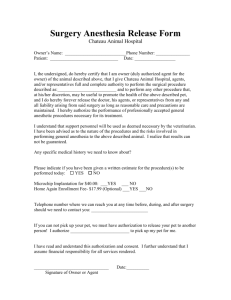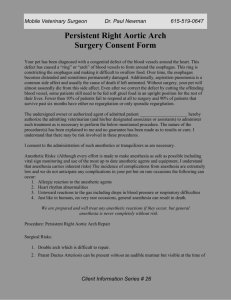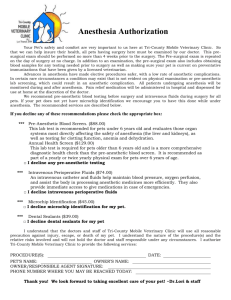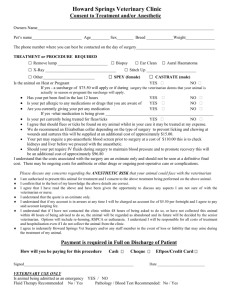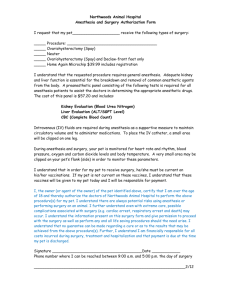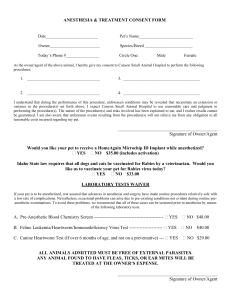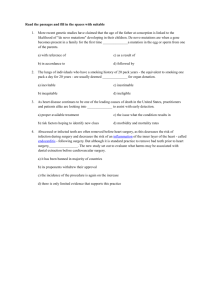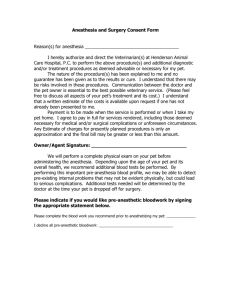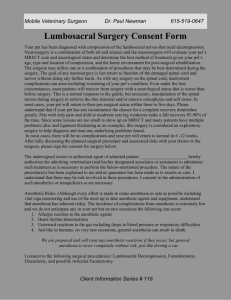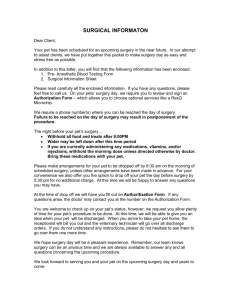What to expect the day of surgery.
advertisement
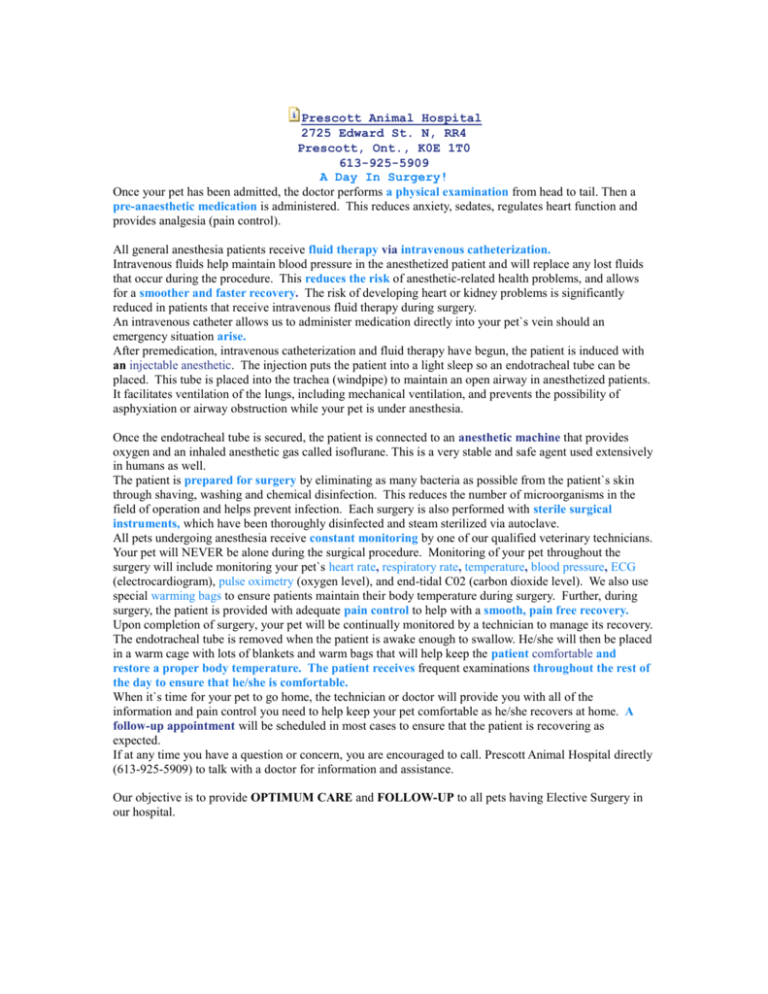
Prescott Animal Hospital 2725 Edward St. N, RR4 Prescott, Ont., K0E 1T0 613-925-5909 A Day In Surgery! Once your pet has been admitted, the doctor performs a physical examination from head to tail. Then a pre-anaesthetic medication is administered. This reduces anxiety, sedates, regulates heart function and provides analgesia (pain control). All general anesthesia patients receive fluid therapy via intravenous catheterization. Intravenous fluids help maintain blood pressure in the anesthetized patient and will replace any lost fluids that occur during the procedure. This reduces the risk of anesthetic-related health problems, and allows for a smoother and faster recovery. The risk of developing heart or kidney problems is significantly reduced in patients that receive intravenous fluid therapy during surgery. An intravenous catheter allows us to administer medication directly into your pet`s vein should an emergency situation arise. After premedication, intravenous catheterization and fluid therapy have begun, the patient is induced with an injectable anesthetic. The injection puts the patient into a light sleep so an endotracheal tube can be placed. This tube is placed into the trachea (windpipe) to maintain an open airway in anesthetized patients. It facilitates ventilation of the lungs, including mechanical ventilation, and prevents the possibility of asphyxiation or airway obstruction while your pet is under anesthesia. Once the endotracheal tube is secured, the patient is connected to an anesthetic machine that provides oxygen and an inhaled anesthetic gas called isoflurane. This is a very stable and safe agent used extensively in humans as well. The patient is prepared for surgery by eliminating as many bacteria as possible from the patient`s skin through shaving, washing and chemical disinfection. This reduces the number of microorganisms in the field of operation and helps prevent infection. Each surgery is also performed with sterile surgical instruments, which have been thoroughly disinfected and steam sterilized via autoclave. All pets undergoing anesthesia receive constant monitoring by one of our qualified veterinary technicians. Your pet will NEVER be alone during the surgical procedure. Monitoring of your pet throughout the surgery will include monitoring your pet`s heart rate, respiratory rate, temperature, blood pressure, ECG (electrocardiogram), pulse oximetry (oxygen level), and end-tidal C02 (carbon dioxide level). We also use special warming bags to ensure patients maintain their body temperature during surgery. Further, during surgery, the patient is provided with adequate pain control to help with a smooth, pain free recovery. Upon completion of surgery, your pet will be continually monitored by a technician to manage its recovery. The endotracheal tube is removed when the patient is awake enough to swallow. He/she will then be placed in a warm cage with lots of blankets and warm bags that will help keep the patient comfortable and restore a proper body temperature. The patient receives frequent examinations throughout the rest of the day to ensure that he/she is comfortable. When it`s time for your pet to go home, the technician or doctor will provide you with all of the information and pain control you need to help keep your pet comfortable as he/she recovers at home. A follow-up appointment will be scheduled in most cases to ensure that the patient is recovering as expected. If at any time you have a question or concern, you are encouraged to call. Prescott Animal Hospital directly (613-925-5909) to talk with a doctor for information and assistance. Our objective is to provide OPTIMUM CARE and FOLLOW-UP to all pets having Elective Surgery in our hospital.
